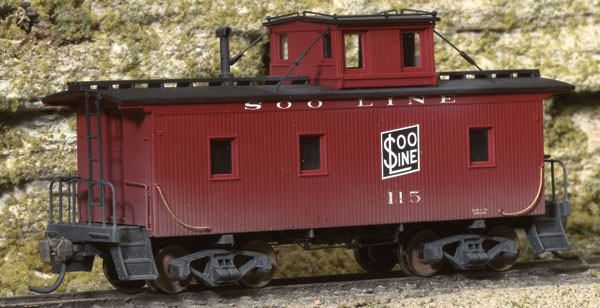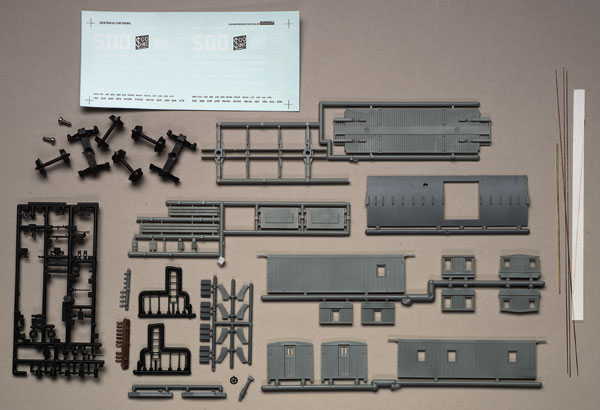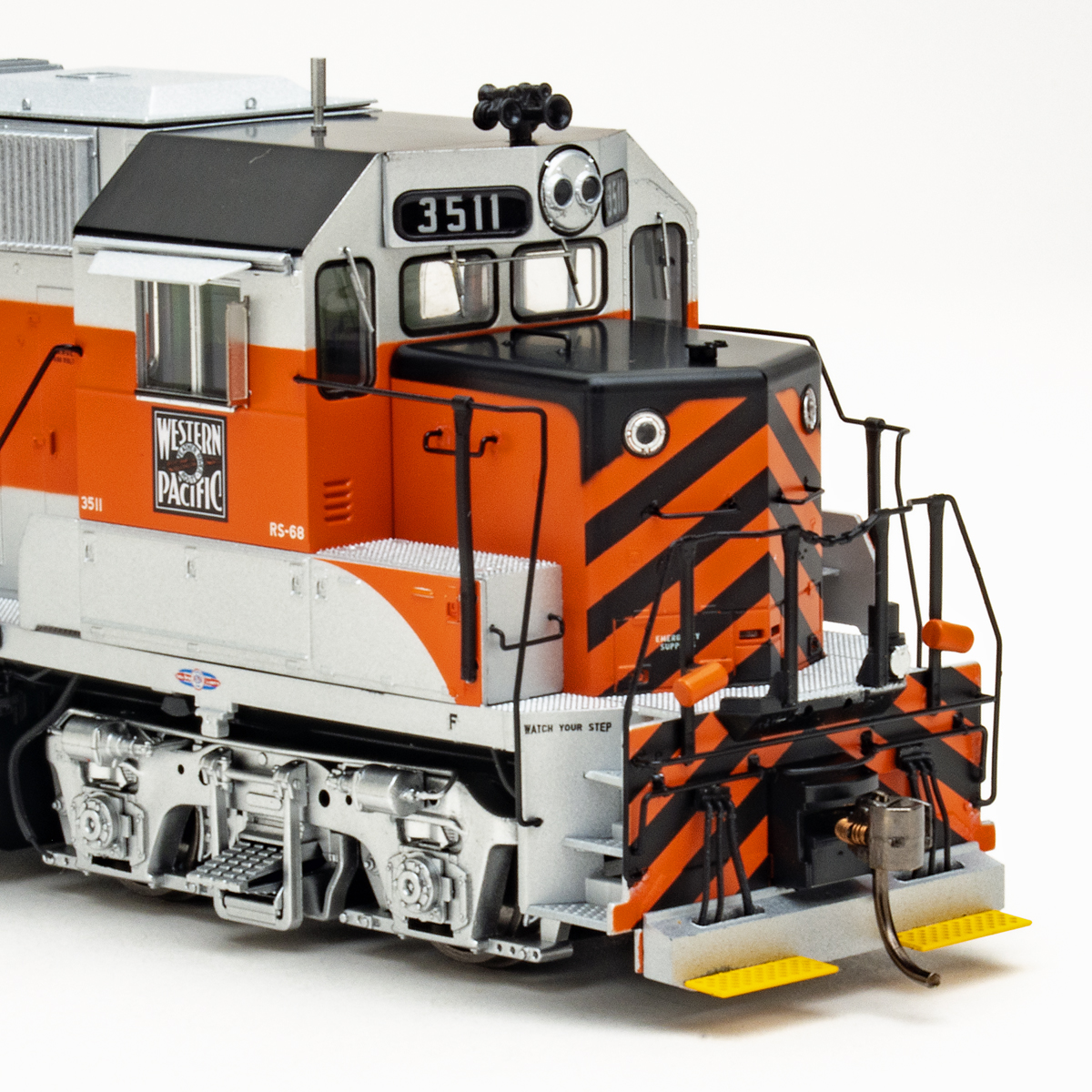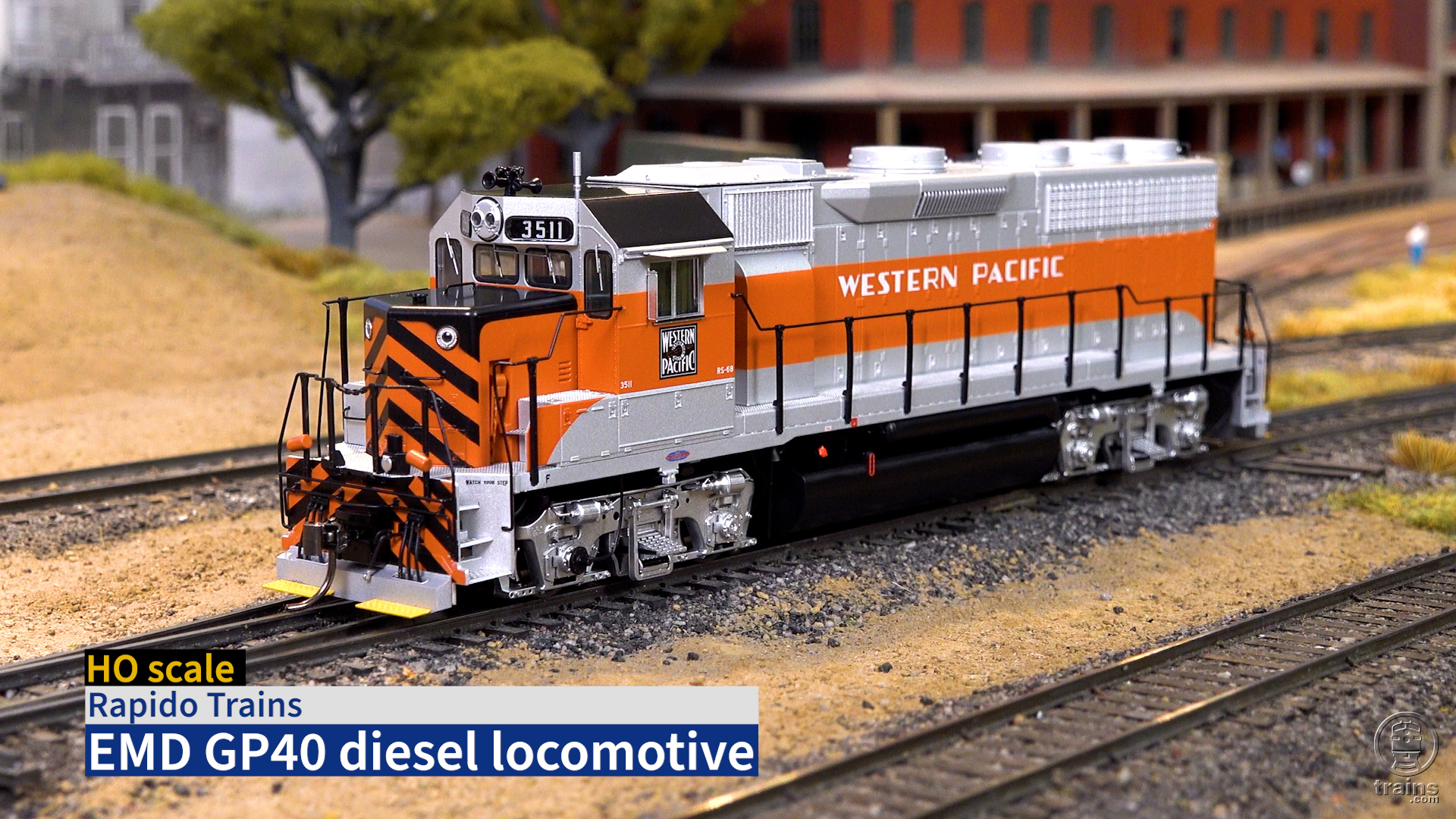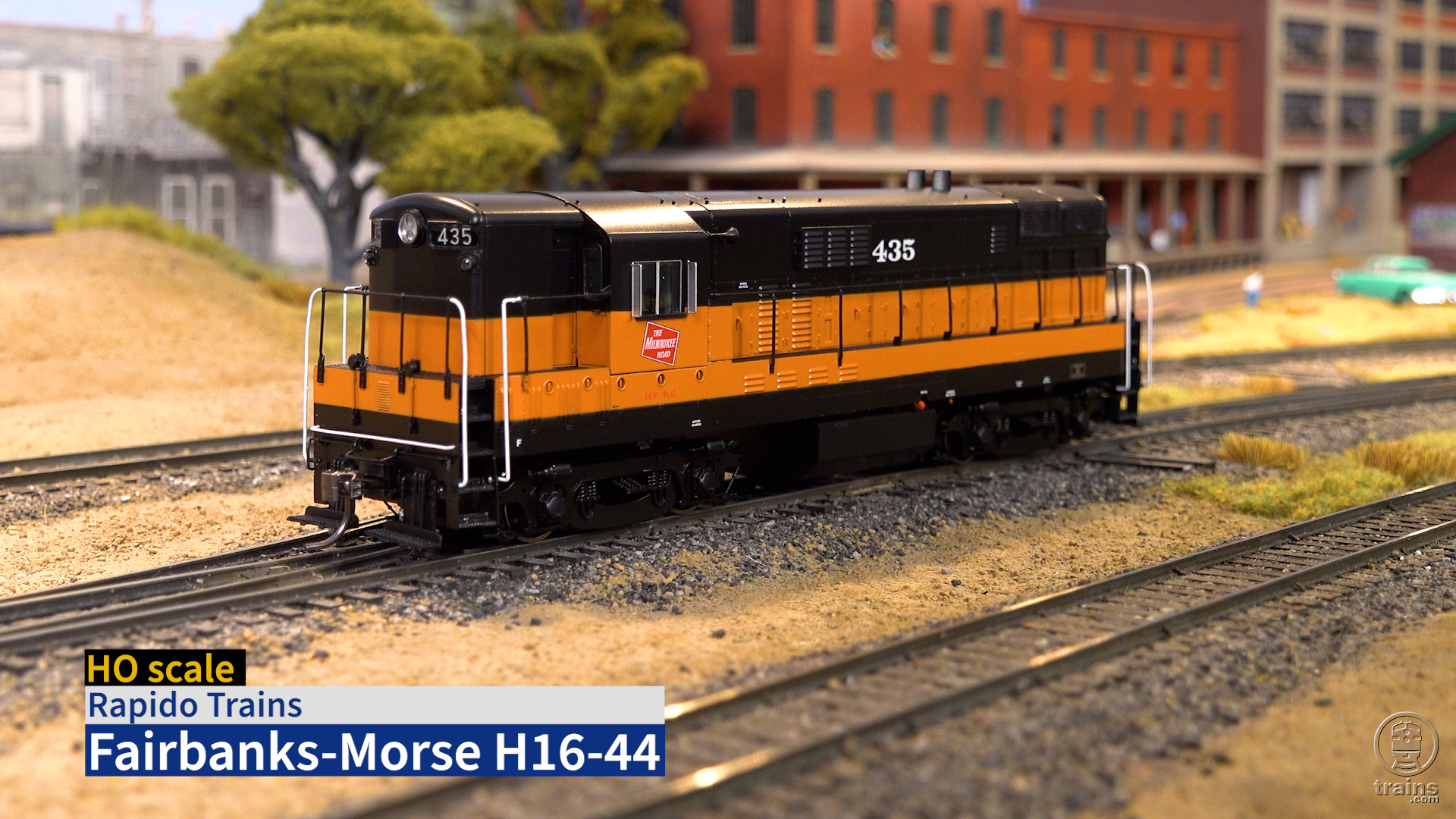After acquiring a variety of cabooses from different builders, the Minneapolis, St. Paul, & Sault Ste. Marie Ry. (Soo Line) settled on a standard design from American Car & Foundry in 1906. The new wooden ACF cars measured 33′-9″ across the coupler pulling faces and had wood underframes. In 1913, the railroad began building its own cabooses at its shop in Shoreham, Minn. Over seven years, the Soo acquired 133 of these cabooses.
Between 1914 and 1924, 31 similar cabooses were built to replace retired or damaged cars for the Soo itself and its two subsidiaries, the Wisconsin Central and the Duluth, South Shore & Atlantic.
In 1924, the Soo decided to overhaul and standardize this fleet of wooden cabooses with steel underframes and new cupolas, giving them a “family” look for the next 30 years. Many of these cars lasted until the late ’70s in branchline and transfer service until they were replaced with steel cabooses.
Centralia supplies a two-sided page of brief instructions with diagrams broken into five basic steps. They also have included a one-page sheet of notes explaining the more difficult tasks.
I highly recommend using a prototype photo as a reference when building this kit! Though the Soo had standardized its caboose fleet, a lot of variations remained including the indiscriminate use of one or two side windows in the cupolas (the kit offers both). Judging from the sources I checked, there’s no rhyme or reason for this practice.
For more information on Soo Line wooden cabooses and a very detailed article on assembling this kit, refer to the spring 2002 issue of The SOO, published by the Soo Line Historical and Technical Society. You can order it at www.sooline.org or write to SOO Back Issues, 702 W. Green St., Watertown, WI 53098-2508.
It took five evenings to complete my kit. The styrene pieces are nicely molded with good detail and are free from flash. Though the instructions were somewhat vague, the basic carbody went together easily using Testor’s liquid styrene cement. I found it was easier to work on the model in three sub-assemblies: the frame, the car body and main roof, and the cupola.
I built the underframe assembly first, including the airbrake system, trucks, and Kadee no. 5 Magne-Matic couplers and boxes.
I glued 3/16″-square styrene blocks behind each end door, then drilled through the bottom of the frame to secure the body with 0-48 x 3/16″ screws.
I formed all of the grab irons from .012″ wire, drilled mounting holes with a no. 79 bit, and attached the grab irons with drops of cyanoacrylate adhesive (CA). For the curved side grab irons, I bent the wire around a ½”-diameter dowel so they would be uniform.
The instructions do not mention placement of the cupola supports. Soo Line Historical and Technical Society member Dennis Storzek informed me that the correct spacing on the cupola supports is 17/16″ from the long end, 11/16″ from the short end, and 1/16″ from the edge of the roof on each side.
Adding the continuous cupola roof grab was by far the most difficult part. After making the first bend in the .012″ wire, I slipped Detail Associates long-shanked eyebolts on the wire. Then I inserted each eyebolt into its hole as I worked my way around the roof, securing them with CA.
The ladders and end railings are very fragile and require great care to remove them from their sprues. Enlarging the railing mounting holes helped a lot when it came time to attach them.
I airbrushed my caboose to match a 1960s photo of prototype no. 115. I painted the trucks, underframe, and the roof with Polly Scale Engine Black and the car body Soo Line Red. After applying the decals, I weathered the car with Polly Scale L&N gray and installed Life-Like Proto 2000 33″ wheelsets.
The finished car weighs just over one ounce, so I added A-Line self-adhesive weights to bring the car up to the National Model Railroad Association’s recommended practice of three ounces for a car this size (one ounce plus ½-ounce per inch of length).
Because of their longevity, this great caboose from Centralia Car Shops would be at home on any Soo Line layout from the 1930s to 1980.
Price $35
Manufacturer:
Centralia Car Shops
Distributed by Des Plaines Hobbies
1468 Lee St.
Des Plaines, IL 60018
Description:
Plastic kit with trucks and decals, less couplers and weight
Road name:
CCS1101 Soo Line





